Visitors flock to the heart of Amish Country in South Central Pennsylvania to see Amish plowing fields with teams of mules, or riding around in quaint horse-drawn buggies. Little would they know that many Amish these days carry a cell phone and readily use power tools during those famous barn raisings—as long as they’re powered by battery.
Those visitors might also be surprised to know that Keystone Air Power, one of Lebanon County’s fastest-growing hardware stores, is a robust Amish enterprise that’s chock full of surprises. The new, fully-modern facility is a marvel of self-sustaining and energy-efficient design. The sprawling, 52,000 sq ft building was constructed around a cutting-edge, off-grid mechanical and electrical system.
The Amish, it appears, know a thing or two about smart technology.
Parking Garage for Horses
One of the things a first-time visitor to the store would see that sets it apart from, say, the Big Box Retailer that is just a stone’s throw from the main entrance, is a horse and carriage facility. Somewhat like a redefined parking garage, it is exactly what one might expect to see on a rerun of Little House on the Prairie.
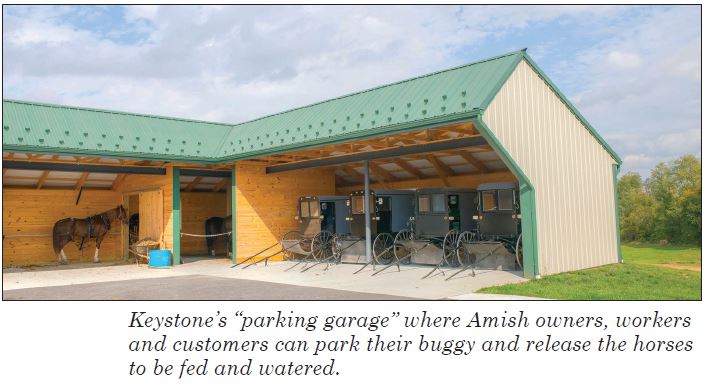
There, horses can be tethered for a quick bath, bite to eat and watering. Carriages have parking spaces under roof. In Winter, after seeing to the comfort of their horse, customers make their way into the store across a snow-melted concrete slab. With a close look, they’d spot one of two embedded, shiny brass sensors that monitor temperature and moisture. Each sensor sends signals to a state-of-the-art tekmar 654 snowmelt control for full automation of hydronic heat to keep outside spaces free of Winter precipitation.
Inside the store, there’s a veritable mountain of modern, lithium-powered tools—the envy of every power tool enthusiast—from chain saws, sanders, impact drivers, drills and carpentry saws, to nail guns and grinders. A shiny array of hand tools and components are meticulously arranged on shelves and in bins.
Every imaginable air tool can be found inside Keystone Air Power: pressure equipment with tanks that create pneumatic power, a wide variety of hoses and connectors to transport pressurized air, and a broad selection of pneumatic tools—from cutters and leather-stitching components, to needle valves, nailers, nibblers and nippers.
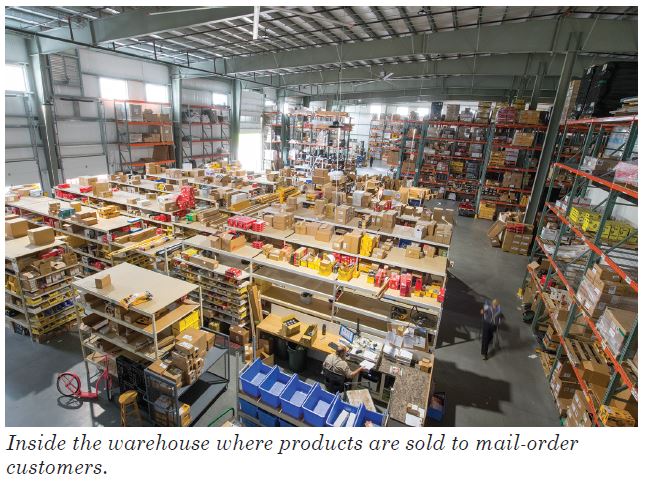
Living Productive Lives
The Amish view technology (and the right mix of tools) as ways to make their lives more productive—never as a distraction from their beliefs. While it’s rarely used in their personal lives, technology, when applied properly, may also play an important role in an Amish business. Wireless phones and computers help Amish business owners connect with customers and suppliers, allowing them to grow and thrive in the modern world. The key to their use of tech is to have no dependence on outside infrastructure; no tether to grid power means no distraction from their faith, allowing the Amish to be modern in many ways while remaining true to their beliefs and traditions.
Keystone Air Power LLC began in 1997 in Jonas Zook’s basement workshop. There, he fixed and sold tools and air compressors for local contractors, woodworking shops, farmers and homeowners. The following year, he moved to a larger building—a horse barn. By 2002, DeWalt, Stanley and Black+Decker all recognized him as a dealer and repair center. A few years later, Zook, who by then had a growing number of employees, moved operations into an 18,000 sq ft facility.
Today, Keystone has 25 full-time employees, a handful of part-timers, links to Porter Cable, Bosch, Milwaukee Tools, Bostitch, Hitachi and Makita, and a $5 million inventory. Nearly two decades after its founding, a steady growth of the business led to the need for a bigger, fully-modern, off-grid facility—an accomplishment borne of deliberate planning.
King-Sized Hydronics
The Amish know and appreciate hydronic heat. While planning its new, customized facility, Keystone’s managers chose Henry King, owner of Kirkwood, PA-based Pleasant View Plumbing & Heating, to do the plumbing and hydronic systems.
Once King had a sense of the size and complexity of the project, he reached out to our manufacturer’s representative firm, ROI Marketing based in Millersville, MD, with questions about equipment selection and system design. Those questions were right up our alley, as many Amish and Mennonite customers call on us routinely for design help, materials and equipment.

“This was a large project for us, about equal in size to one other commercial facility that we completed a few years earlier—yet with some really neat differences, like the substantial snow-melt area and the provision of co-gen heat,” said King.
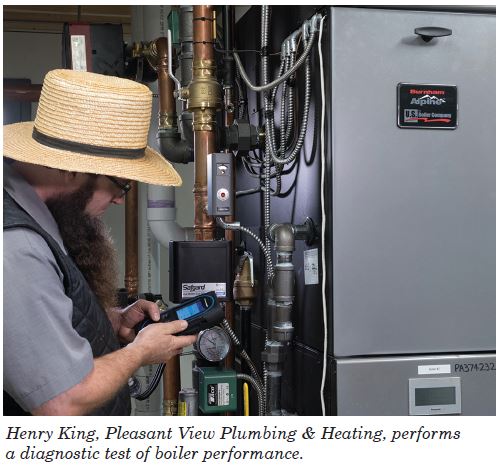
King is referring to the installation of two natural gas-powered electric generators housed in a lower portion of the facility. There, a 225 kW and 141 kW generator power-up, as needed, supplies energy to a bank of Schneider Electric inverters and batteries. Waste heat from the smaller generator is harvested by a plate-and-frame heat exchanger. When the generator can’t provide sufficient heat for the facility, the responsibility shifts to equipment in the upstairs mechanical room. There, two stacked, 800 MBH, natural gas-fired Alpine commercial boilers by U.S. Boiler Co. await a signal from tekmar controls and thermostats.
The up-to-97% AFUE, low NOx Alpine condensing boilers are equipped with advanced technologies to constantly monitor performance and match fuel consumption directly to heating demand. The Alpine incorporates outside temperature sensing technology that automatically adjusts the firing rate of the boiler based on the outside air temperature—and the availability of heat from the generator.
The boilers are also equipped with U.S. Boilers’ Sage 2.3 boiler control system, which includes a built-in sequencer for internal staging of up to eight Alpine boilers. The Alpine line offers 80 to 800 MBH in 10 sizes, many of which may also be wall-hung.
When running, the generator provides up to 80,000 BTUs as a free-heat source for the building’s radiant heat system. Thermal energy (at a provision of 180°F) is transferred from the heat exchanger to the return loop, where it’s mixed to much lower temperatures suitable for radiant comfort—delivered by more than seven miles of ¾-inch oxygen-barrier PERT tubing in the high-mass floor slab. This allows the generator to serve as the primary source of heat when running, but also to reduce the firing rate of the boilers if both systems are operating simultaneously. Combining the heat sources was accomplished without disrupting the typical 20-degree ∆T, maintaining the boilers’ ability to condense for highest operational efficiency.
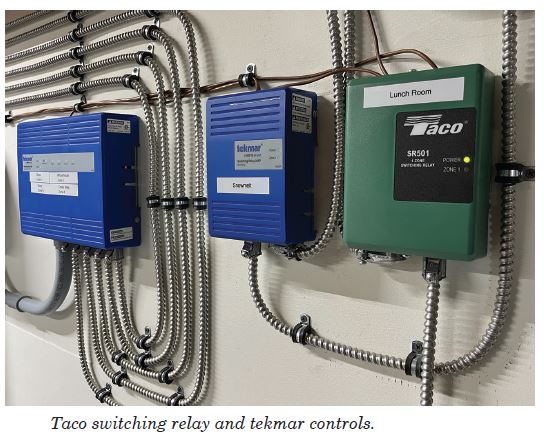
Hajoca Takes the Stage
Hajoca Corp. of Lancaster, PA, brought the boilers to the site months earlier, along with pumps, radiant and snowmelt manifolds, components and fittings. A bevy of circulators were used for the hydronic system—most connected via press fittings to 1″ and 1½″ copper.
Together, King and I selected tekmar 304P multi-switching relays for the in-floor radiant heat, while a tekmar 301P single-zone switching relay was used for the snowmelt.
King and Pleasant View technicians Jim Mellot and Samuel Zook began work in November 2022, and completed the job seven months later, providing radiant heat for most of the first floor, upstairs lunchroom, and 4,500 sq ft of snowmelt outside.
“We’re delighted that we were chosen by Keystone to do this job,” said King.
“We get a good feeling every time we come here to provide seasonal service for the equipment, or to buy tools. We’re among friends here.” ICM
Dave Raabe is Co-Owner & Sales Manager at ROI Marketing, a manufacturer’s representative firm covering the Mid-Atlantic region. An industry veteran with 30 years of experience, Raabe has extensive knowledge of hydronics, heating system design and pumping systems, including domestic hot water boosting and recirculation.
From unheard of to almost mandatory, the thermostat common wire or “C wire” has become a major issue. What is a C wire? The common wire is the neutral wire from the 24V transformer that provides the power that WiFi thermostats require in order for their features to work. Most existing homes do not have a C wire since non-connected thermostats don’t require them.
Wifi thermostats are only going to continue to grow in popularity and will sooner rather than later dominate the market. What to do then about the mostly absent C wire? Even if the spare wire is available, where do you attach it to pick up the necessary 24V?
Some manufacturers claim their wifi thermostat doesn’t require a C wire. More than one of my callbacks has led me to believe that this isn’t quite true. Older thermostats, even programmable ones, are relatively simple devices that can be powered reliably from a couple of AA batteries for years. Wifi devices use vastly more power and require a continuous power supply for trouble-free operation. For the purposes of this article, I’m going to confine it to simple single zone oil systems, hot water, warm air and steam. I  will cover multi-zone applications in a future article.
will cover multi-zone applications in a future article.
Let’s assume we’re working on a single zone hot water system and have a spare wire or have run a third wire to the boiler. Now what do we do? We get either a Beckett AC ready kit or Carlin Koolkit (Figure 1).
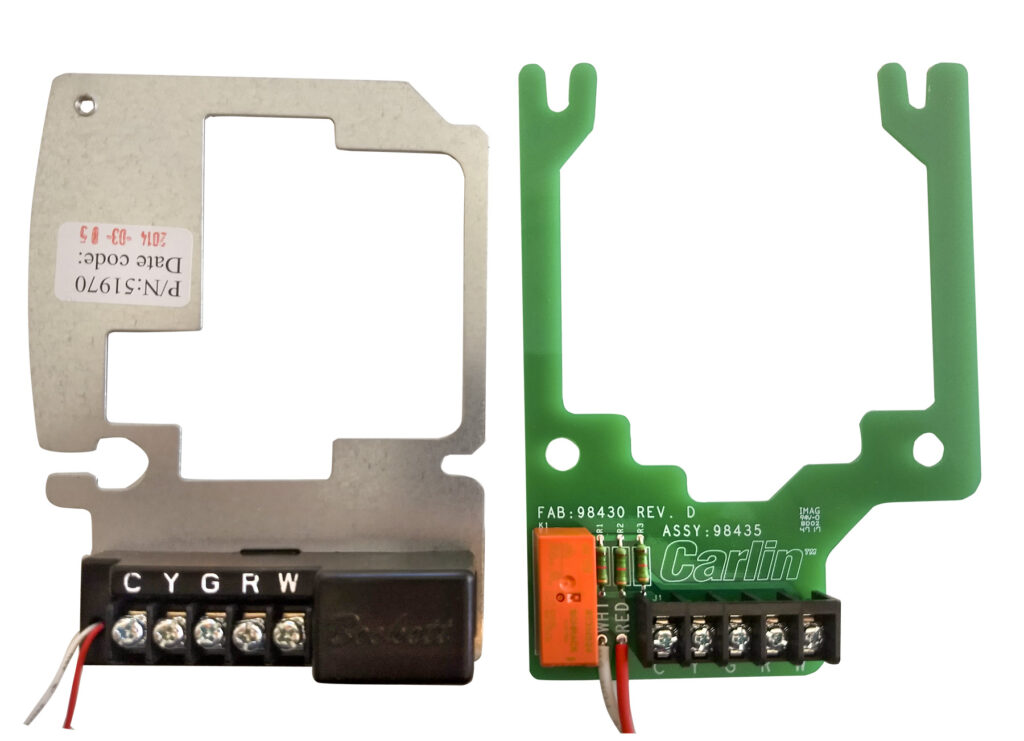
Why do we need a cooling device on a hot water boiler? Both of these are made to enable a modern oil primary to replace an 8184M and contain a transformer, relay and terminal strip—just what we need to provide a constant 24V power supply and switch for a wifi thermostat in an easy to install format! As an aside, if the job happens to have an older primary control, this would be a perfect time to upgrade to an electronic primary with diagnostic capability.
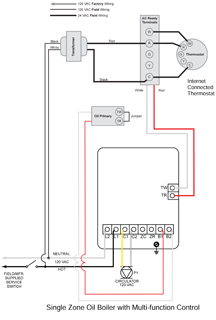
Install the AC kit per the manufacturer’s instructions; if there is not constant 120V power to the primary control mounting box, you will have to run a wire to provide this. The easiest spot is the L1 terminal in boiler temperature control, assuming it is powered at all times and not broken by a limit switch or low water cutoff. You could also mount the transformer at the power source and run low voltage wire to the terminal strip. As long as the power is not interrupted by operating or limit controls, we don’t want our thermostat going blank every time the boiler is off on temperature!
Now the existing thermostat leads, as well as our common lead, go the terminal strip as in the diagram (Figure 2) and the wires from the AC kit relay go to the TT terminals on boiler temperature control where the thermostat leads were previously. We’re done! ICM
What exactly is IoT and how will it affect the HVAC industry in general and oilheat in particular? “IoT” stands for the Internet of Things, physical devices that contain electronics, sensors and switches that allow the device to connect and exchange data over the internet.
I received a call a few weeks ago from the daughter of a long-time customer; she was having a few issues with her heating system. She and her husband both work during the day, as most people do nowadays. She asked it was OK if I could check the heating system with no one were home. I had no problem with that if they didn’t and I went over at the appointed time.
There was a car in the driveway, which I wasn’t expecting, so I rang the bell. Immediately she responded by voice over the wifi doorbell that has both video and audio. She unlocked the wifi-enabled door lock remotely and in I went. She told me to help myself to coffee and text her if I needed anything.
After a short while, I needed to turn up one of the thermostats, so texted her to ask the location of the offending thermostat. Within 30 seconds, she had activated the wifi thermostat. This was a first for me, but much better than running up and down two flights of stairs and much faster too! I texted when her when I was done, asking if she wanted me to lock the door when I left.
“No need,” she responded, “I’ll lock it when I see you leave. The doorbell has a motion operated camera.” That is the IoT.

Wifi thermostats
The growth of wifi thermostats such as Nest, Ecobee, Lyric etc. has been tremendous and is just a forerunner of what is to come as other components of an HVAC system become interconnected. In 2015, there were approximately 4.9 million devices connected to the internet. Over 3.9 billion connected devices were in use worldwide in 2016. The number went from millions to billions in one year. The consensus seems to be that more than 20 billion IoT devices will be in use by 2020 with growth accelerating from there.
The IoT is going to revolutionize the way oilheating systems are installed and serviced. This has already happened with connected thermostats, as the previously-almost-unheard-of common wire has suddenly become indispensable, contrary to what some makers of these devices claim. A few years ago, I’d never heard of a common maker, now I can’t leave home without one, nor without a roll of 18/3! Some zone relays provide access to a C terminal and all controls that interface with a thermostat will need one in the future.
The demand for wifi thermostats has been primarily consumer driven—oil tank gauges are a different story. The demand for gauges has been mostly from the industry. Knowing the exact level of your customers’ tanks at any moment is invaluable information but consumers are going to want that information also, particularly the 30% of the market that is COD. After being able to ask Alexa or Google to answer any question or turn on or off a myriad of devices, expectations have been raised a bit beyond a floating piece of cork or plastic. They’ll want to ask “How much oil do I have?” and, more importantly, “When will I run out?” It is much easier to have Alexa answer that question than a CSR at 2AM on a January morning.
The real revolution
Connected oil tank gauges and thermostats are just different ways to interact with simple devices that homeowners have been using forever. The real revolution is going to be in the controls and how technicians use them to diagnose problems. The newer, microprocessor primary controls that collect and store data are great. Unfortunately, however, you have a send a technician to the premises to peruse and hopefully correctly interpret that data to reach a correct diagnosis. A connected primary control could display that data on a phone or tablet rather than the small LCD screens now in use. More importantly, however, the control could translate those often-indecipherable numbers into a troubleshooting flow chart with links to video and written tutorials that precisely address the issue at hand. Less experienced technicians will suddenly no longer be guessing. Taking it one step further, if that primary control were connected to the internet, it could send a notification if any fault was detected or any parameter off its baseline, giving an early warning of potential problems. For example, if a unit that had been running under 300 ohms su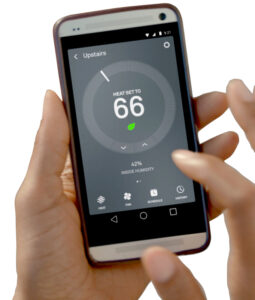 ddenly is 900 ohms, it’s a pretty safe bet something bad is happening. Would you rather find out now while the unit is still running or at midnight when it finally locks out?
ddenly is 900 ohms, it’s a pretty safe bet something bad is happening. Would you rather find out now while the unit is still running or at midnight when it finally locks out?
The possibilities are endless with this technology. Why run wires to a thermistor outside for outdoor reset? A connected control can get the temperature from the internet. Want to run different reset curves when the house is occupied or unoccupied? No problem with geofencing. Why not ignore DHW (domestic hot water) calls from an indirect or conventional hot water heater when the house is empty? Another geofencing solution. The future is very promising for those willing to embrace and profit from this technology. ICM
Brookhaven National Laboratory, after a long hiatus, has brought back the popular Oilheat Technical Workshop. BNL has, for many years, conducted oilheat-related research projects at its Energy Conservation Group, which is located in the Oilheat Research Lab. Run by Dr. Tom Butcher, the lab—relocated to new facilities on the sprawling Department of Energy’s BNL campus—researches not only oil heat, but other fuels and has been commissioned by NORA, NYSERDA and other agencies to examine methods of utilizing fuel as efficiently as possible.*
*A report on BNL’s Solar Thermal Project appears in the June 2012 issue of Indoor Comfort Marketing.
The Workshop
On October 8-9, 2012, the lab convened the Oilheat Technical workshop, with nearly 60 guests seeking to learn what BNL is up to regarding its ongoing projects.
Technical presentations by both staff and invited guests filled most of the first day and part of the second, which concluded with a tour of the new laboratory facilities.
Key topics included an update on NORA by its President, John Huber, followed by a look at advanced venting research by Roger Marran of Energy Kinetics.
Elmar Schraeder, of Wöhler (Germany) explained his company’s approach to Evaluating the Efficiency of Boilers in the Field. His company makes test instruments.
Then Chad Korach, of the National Biodiesel Board, updated attendees on the feasibility of biodiesel/heating oil blends above 5% (B5), including B20 to B100. The issue is evaluation of legacy equipment in the field, a continuing research project to see if long term use can affect seals primarily on equipment installed before the advent of biodiesel.
An update on Ultra Low Sulfur and Corrosion of Condensing Heat Exchangers and new control technologies was provided by Butcher and J. Wong of BNL explained the concept of Self Powered Heating Systems using Thermophotovoltaic and Thermoelectric Conversion. Put simply, the heat and light created in an oilfired burner could be used to generate electricity, enough to possibly run the burner itself. Not exactly perpetual motion, but enough to allow a heating system to run even in the event of a power failure.

The oilheating industry is clearly not part of the tech boom, we have no new iPhone 5, no tablet, no video games streaming into living rooms; however, we are touched by the tech boom—it does help us deliver better services, and it does improve comfort and price to consumers. So, everyone in the industry owes it to themselves and their customers to continuously evaluate new technologies and the value they bring to customers.
Electronic controls are required on new boilers. However, there are retrofit options, and NYSERDA*, Brookhaven**, manufacturers of controls, and NORA are evaluating the best control strategies to ensure the industry uses appropriate tools. We are seeing the next generation of thermostats coming into the market, and some are being promoted at your major home stores.
Furnaces and boilers have continued to improve in the last few years. We have many that condense and thus operate at maximum efficiency. These technologies are ensuring that our customers still get a good value during these times of high crude prices.
Finally, the fuel continues to improve. Throughout the country, low sulfur fuel is taking over, which will improve efficiency and reduce the need to clean the heat exchanger. Accompanying those changes, biofuels are increasing their market share and the percentage of fuel. This trend will continue, and NORA is conducting studies to ensure the fuel will work well in our equipment.
*New York State Energy Research and Development Authority
**Brookhaven National Laboratory